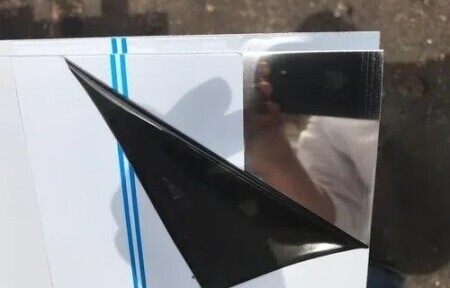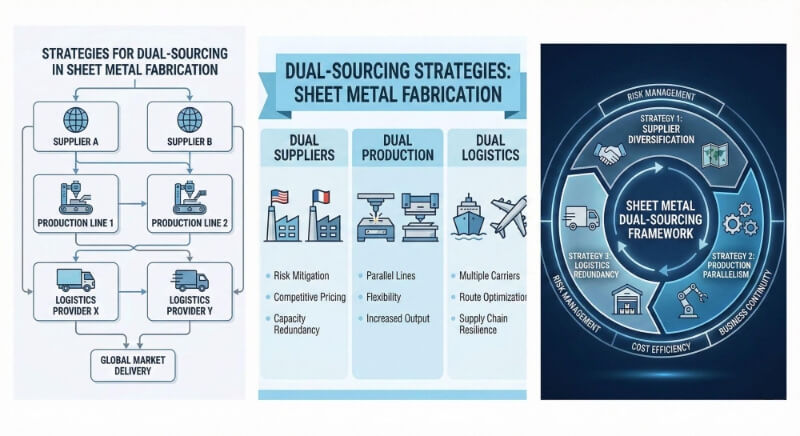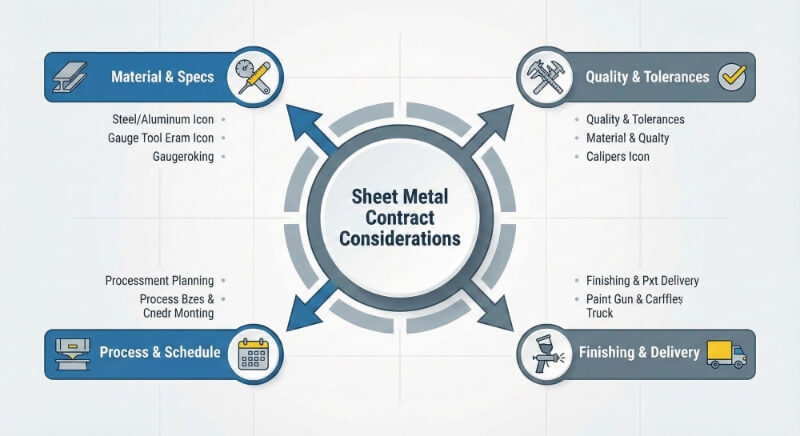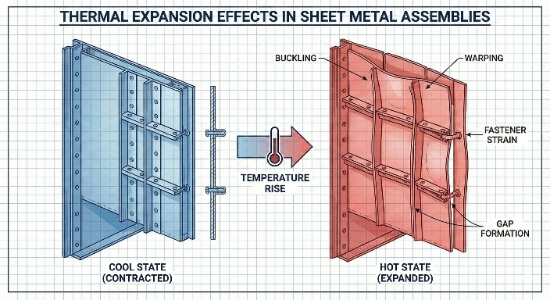Achieving a mirror finish on metal surfaces can be challenging. Many fabricators struggle with attaining that perfect, reflective sheen. They often face scratches, uneven polishing, or a dull final result. But with the proper techniques and tools, you can create stunning mirror-like surfaces that elevate your products.
A mirror finish is a high-gloss, reflective surface achieved through meticulous polishing. It transforms metal surfaces into smooth, mirror-like planes that reflect light perfectly. This finish enhances aesthetics, improves corrosion resistance, and adds value to products across various industries.
Want to master the art of mirror finishing? Let’s explore the essential techniques, tools, and applications to help you achieve flawless, reflective surfaces on your metal projects.

Understanding Mirror Finish
What is Mirror Finish?
A mirror finish is a highly polished surface that reflects light almost perfectly. It creates a smooth, glossy appearance on metal surfaces. This finish stands out for its exceptional clarity and reflectivity. Metal with a mirror finish appears like a glass mirror, reflecting images with minimal distortion.
Types of Mirror Finish
Several types of mirror finishes exist, each with unique characteristics:
- #8 Super Mirror Finish: The highest grade, offering near-perfect reflection.
- #7 Reflective Finish: Slightly less reflective than #8, but still highly polished.
- #6 Brushed Finish: A satin-like appearance with fine, parallel lines.
- #4 Brushed Finish: A less reflective, more matte appearance than #6.
Applications Across Different Industries
Automotive
The automotive industry widely uses mirror finishes. They apply this technique to:
- Exhaust systems
- Wheel rims
- Decorative trim pieces
- Custom car parts
Mirror finishes enhance vehicle aesthetics and increase resale value.
Aerospace
In aerospace, mirror finishes serve both functional and aesthetic purposes:
- Aircraft interiors
- Engine components
- Satellite reflectors
- Optical systems
These finishes improve aerodynamics and light reflection in critical components.
Architecture
Architects and designers incorporate mirror finishes in various ways:
- Stainless steel facades
- Decorative panels
- Elevator interiors
- Handrails and fixtures
Mirror-finished elements add sophistication and visual interest to buildings.
Consumer Products
Many everyday items benefit from mirror finishes:
- Kitchen Appliances
- Watches and Jewelry
- Mobile device casings
- High-end kitchenware
These finishes elevate product appearance and perceived quality.
Tools and Equipment for Achieving Mirror Finish
Grinding Machines
Grinding machines play a crucial role in the initial stages of mirror finishing:
- Belt grinders remove significant imperfections quickly.
- Angle grinders offer versatility for various surface types.
- Bench grinders work well for smaller parts.
Choose the proper grit progression to achieve a smooth surface before polishing.
Buffing Machines
Buffing machines are essential for creating that final, mirror-like sheen:
- Handheld buffers offer flexibility for intricate parts.
- Stationary buffing wheels provide consistent results for larger surfaces.
- Variable speed buffers allow for precise control over the finishing process.
Invest in high-quality buffing machines to ensure even and efficient polishing.
Polishing Wheels and Compounds
The right combination of wheels and compounds is critical to a perfect mirror finish:
- Sisal wheels work well for the initial polishing stages.
- Canton flannel wheels excel at final buffing.
- Loose leaf buffing wheels conform to complex shapes.
Pair these wheels with appropriate compounds:
- Rough-cut compounds for removing scratches
- Acceptable cut compounds for smoothing
- Extra delicate compounds for that final, high-gloss shine
Automated Polishing Systems
For large-scale production, automated systems offer consistency and efficiency:
- Robotic arm polishers handle complex geometries.
- CNC polishing machines provide precise, repeatable results.
- Automated belt systems work well for flat surfaces.
These systems reduce labor costs and increase output while maintaining quality.

Techniques for Achieving Mirror Finish
Preparation of the Surface
Cleaning and De-greasing
Start with a clean surface for the best results:
- Use solvent-based degreasers to remove oils and residues.
- Apply ultrasonic cleaning for intricate parts.
- Wipe down surfaces with lint-free cloths to avoid contamination.
Clean surfaces ensure better adhesion of polishing compounds and prevent scratches.
Initial Grinding and Smoothing
Prepare the surface for polishing:
- Begin with coarse-grit sandpaper to remove significant imperfections.
- Progress through finer grits to smooth out scratches.
- Use a circular motion to avoid creating visible patterns.
Aim for a uniform surface before moving to the polishing stage.
Step-by-Step Polishing Process
Selection of Abrasive Grits
Choose the suitable abrasives for each stage:
- Start with 80-120 grit for rough surfaces.
- Move to 240-400 grit for intermediate smoothing.
- Finish with 600-1000 grit before final polishing.
Proper grit selection ensures efficient material removal and surface preparation.
Progression from Coarse to Fine Polishing
Follow a systematic approach:
- Begin with coarse polishing compounds on sisal wheels.
- Switch to medium compounds on softer wheels.
- Use acceptable compounds for the pre-finish stage.
Work in small sections, overlapping slightly to ensure full coverage.
Final Buffing Techniques
Achieve that perfect mirror shine:
- Use extra-fine compounds on soft buffing wheels.
- Apply light pressure and maintain constant motion.
- Buff in multiple directions for an even finish.
The final buffing stage requires patience and attention to detail.
Achieving Consistency in Mirror Finish
Controlling Speed and Pressure
Maintain uniform results:
- Keep a consistent speed throughout the process.
- Apply even pressure to avoid creating high or low spots.
- Adjust technique for different shapes and contours.
Practice on scrap pieces to perfect your control and technique.
Monitoring Temperature and Environment
Prevent issues caused by environmental factors:
- Avoid overheating by taking breaks and using coolants.
- Control humidity to prevent moisture-related problems.
- Maintain a clean workspace to prevent contamination.
Consistent conditions lead to consistent results in mirror finishing.
Advantages of Mirror Finish
Mirror finishes offer numerous benefits across various applications:
Enhanced Aesthetics
Mirror-finished surfaces elevate product appearance:
- Create a premium, high-end look.
- Reflect light beautifully, adding visual interest.
- Complement other materials and finishes.
This superior aesthetic appeal often justifies higher pricing for products.
Improved Corrosion Resistance
Mirror finishes provide excellent protection against corrosion:
- Smooth surfaces leave fewer places for corrosive agents to attack.
- Highly polished surfaces are easier to clean and maintain.
- Some mirror finishes include protective coatings for added durability.
This increased corrosion resistance extends the product lifespan significantly.
Functional Benefits
Beyond aesthetics, mirror finishes serve practical purposes:
- Reduce friction in moving parts.
- Enhance light reflection in optical applications.
- Improve heat reflection in thermal management systems.
These functional advantages make mirror finishes crucial in many industries.
Easy Maintenance
Mirror-finished surfaces are typically easier to maintain:
- Smooth surfaces resist dirt and grime buildup.
- Cleaning requires less effort and fewer harsh chemicals.
- Scratches and blemishes are often easier to repair.
This ease of maintenance contributes to long-term cost savings.
Versatility
Mirror finishes work well on various materials and shapes:
- Applicable to different metals like stainless steel, aluminum, and brass.
- Suitable for flat surfaces, curves, and complex geometries.
- Adaptable to both small parts and large-scale applications.
This versatility makes mirror finishes a go-to option for many projects.

Challenges in Mirror Finishing
Common Issues and Solutions
Surface Imperfections
Addressing surface flaws:
- Fill minor scratches with specialized metal fillers
- Use spot polishing techniques for localized defects
- Consider re-grinding severely damaged areas
Patience and attention to detail are crucial to resolving imperfections.
Uneven Reflection
Achieving uniform reflectivity:
- Ensure consistent pressure during polishing
- Use a guide coat to identify low spots
- Polish in multiple directions for even coverage
Take your time to create a perfectly even surface.
Oxidation and Corrosion
Protecting the finished surface:
- Apply a clear protective coating after polishing
- Use anti-corrosion sprays for long-term protection
- Store finished pieces in a dry, clean environment
Regular maintenance helps preserve the mirror finish.
Safety Considerations
Handling Chemicals and Compounds
Prioritize safety when working with polishing materials:
- Wear chemical-resistant gloves when handling compounds
- Use eye protection to guard against splashes
- Work in a well-ventilated area to avoid fume inhalation
Read and follow all safety data sheets for your materials.
Preventing Burns and Injuries
Protect yourself during the polishing process:
- Wear heat-resistant gloves to prevent friction burns
- Use protective clothing to shield skin from flying debris
- Secure loose clothing and tie back long hair
Always prioritize personal safety over speed or convenience.
Mirror Finish for Specific Materials
Mirror Finishing Stainless Steel
Stainless steel responds well to mirror finishing techniques:
- Start with 80-grit sandpaper and progress to 2000-grit.
- Use a buffing compound specifically designed for stainless steel.
- Apply light pressure to avoid creating heat-induced discoloration.
Techniques and Considerations
- Maintain consistent direction when sanding to avoid cross-hatching.
- Use a lubricant during polishing to reduce friction and heat.
- Consider electropolishing for complex shapes or large surfaces.
Remember, different grades of stainless steel may require slight variations in technique.
Mirror Finish on Aluminum
Aluminum presents unique challenges due to its softness:
- Begin with a finer grit (around 220) to avoid deep scratches.
- Use soft buffing wheels to prevent gouging the surface.
- Apply less pressure than you would with harder metals.
Overcoming Oxidation Challenges
- Clean the surface thoroughly before and between the polishing stages.
- Work quickly to minimize exposure to air and moisture.
- Apply a clear protective coating immediately after achieving the desired finish.
Consider anodizing after polishing for enhanced durability and corrosion resistance.
Polishing Titanium to a Mirror Finish
Titanium requires special care due to its hardness and heat sensitivity:
- Diamond abrasives are used for the initial grinding stages.
- Progress through grits more gradually than with softer metals.
- Employ specialized titanium polishing compounds for the final stages.
Managing Heat and Discoloration
- Use lower RPMs to reduce heat generation during polishing.
- Apply coolant or lubricant generously throughout the process.
- Take frequent breaks to allow the material to cool down.
Monitor the surface closely for signs of heat-induced color changes, which can be challenging to remove.
Conclusion
A mirror finish transforms ordinary metal into extraordinary surfaces. It demands skill, patience, and the proper techniques. With practice, you’ll create stunning reflective finishes that elevate your projects. Remember, the key lies in meticulous preparation, gradual progression, and attention to detail. Master these elements, and you’ll unlock the full potential of mirror-finished metal surfaces.
Do you need a reliable sheet metal parts manufacturer? Shengen is the place to go. We specialize in sheet metal laser cutting, bending, surface finish, and CNC Machining. Reach out to Shengen Today and seek help from professionals!
FAQs
What is the difference between a regular finish and a mirror finish?
A regular finish often has visible grain or texture. A mirror finish is ultra-smooth and highly reflective, like a mirror. It requires more extensive polishing and finer abrasives to achieve.
How long does a mirror finish last?
With proper care, a mirror finish can last for years. Regular cleaning and avoiding abrasive materials help maintain its shine. However, environmental factors and usage can affect its longevity.
Can mirror finish be achieved at home?
Yes, but it requires patience and practice. Start with small projects and invest in quality tools and compounds. Professional results often come from experience and specialized equipment.
What are the most common mistakes in achieving a mirror finish?
Common mistakes include rushing the process, skipping grit levels, applying too much pressure, and neglecting proper surface preparation. Taking shortcuts often leads to subpar results.
Is mirror finish environmentally friendly?
The process can be made more eco-friendly by using water-based compounds and proper disposal methods for waste materials. Some newer polishing technologies also aim to reduce environmental impact.
Hey, I'm Kevin Lee

For the past 10 years, I’ve been immersed in various forms of sheet metal fabrication, sharing cool insights here from my experiences across diverse workshops.
Get in touch

Kevin Lee
I have over ten years of professional experience in sheet metal fabrication, specializing in laser cutting, bending, welding, and surface treatment techniques. As the Technical Director at Shengen, I am committed to solving complex manufacturing challenges and driving innovation and quality in each project.




